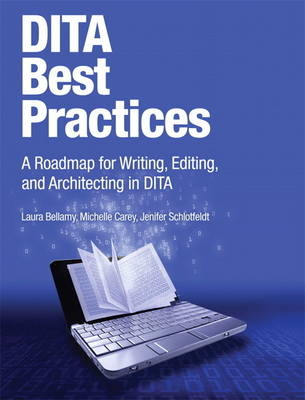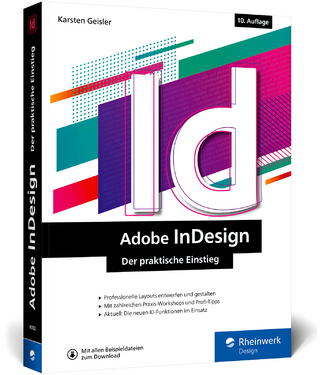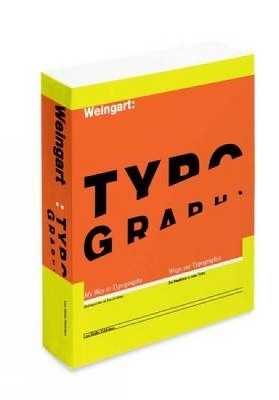
DITA Best Practices
IBM Press (Verlag)
978-0-13-248052-9 (ISBN)
- Titel ist leider vergriffen;
keine Neuauflage - Artikel merken
Darwin Information Typing Architecture (DITA) is today’s most powerful toolbox for constructing information. By implementing DITA, organizations can gain more value from their technical documentation than ever before. Now, three DITA pioneers offer the first complete roadmap for successful DITA adoption, implementation, and usage.
Drawing on years of experience helping large organizations adopt DITA, the authors answer crucial questions the “official” DITA documents ignore, including: Where do you start? What should you know up front? What are the pitfalls in implementing DITA? How can you avoid those pitfalls?
The authors begin with topic-based writing, presenting proven best practices for developing effective topics and short descriptions. Next, they address content architecture, including how best to set up and implement DITA maps, linking strategies, metadata, conditional processing, and content reuse. Finally, they offer “in the trenches” solutions for ensuring quality implementations, including guidance on content conversion.
Coverage includes:
Knowing how and when to use each DITA element–and when not to
Writing “minimalist,” task-oriented information that quickly meets users’ needs
Creating effective task, concept, and reference topics for any product, technology, or service
Writing effective short descriptions that work well in all contexts
Structuring DITA maps to bind topics together and provide superior navigation
Using links to create information webs that improve retrievability and navigation
Gaining benefits from metadata without getting lost in complexity
Using conditional processing to eliminate redundancy and rework
Systematically promoting reuse to improve quality and reduce costs
Planning, resourcing, and executing effective content conversion
Improving quality by editing DITA content and XML markup
If you’re a writer, editor, information architect, manager, or consultant who evaluates, deploys, or uses DITA, this book will guide you all the way to success.
Also see the other books in this IBM Press series:
Developing Quality Technical Information: A Handbook for Writers and Editors
The IBM Style Guide: Conventions for Writers and Editors
Laura Bellamy is an Information Architect at VMware, Inc. and a technical communications instructor at University of California Santa Cruz Extension. Laura has been a long-time DITA champion, working at IBM during the adoption and proliferation of DITA. Throughout her career, she has worked on many facets of DITA implementation and now dreams in XML. Michelle Carey is a technical editor at IBM and a technical communications instructor at University of California Santa Cruz Extension. Michelle has taught IBM teams and users’ groups about best practices for authoring in DITA, topic-based writing, writing for translation, editing user interfaces, and writing effective error messages. She is also a coauthor of the book Developing Quality Technical Information. Michelle loves to ride motorcycles and mountain bikes, herd cats, and diagram sentences. Jenifer Schlotfeldt is a project leader, information developer, and technical leader at IBM and a technical communications instructor at the University of California Santa Cruz Extension. She has been authoring, testing, and teaching DITA since 2003. She has converted documentation to DITA, authored new content in DITA, contributed to new DITA specializations, and created many training materials for different facets of DITA authoring.
Acknowledgments xviii
About the Authors xx
Introduction 1
PART I: WRITING IN DITA 5
Chapter 1 Topic-Based Writing in DITA 7
Books, Topics, and Webs of Information 7
Advantages of Writing in Topics for Writing Teams 9
Writers Can Work More Productively 9
Writers Can Share Content with Other Writers 9
Writers Can Reuse Topics 10
Writers Can More Quickly Organize or Reorganize Content 10
Reviewers Can Review Small Groups of Topics Instead of Long Books 10
DITA Topic Types 10
Task Orientation 12
Task Analysis 13
Minimalist Writing 16
Know Your Audience 16
Remove Nonessential Content 16
Focus on User Goals, Not Product Functions 16
To Wrap Up 17
Topic-Based Writing Checklist 18
Task analysis form 19
Chapter 2 Task Topics 21
Separate Task Information from Conceptual or Reference Information 22
Write One Procedure per Topic 22
Create Subtasks to Organize Long Procedures 22
Task Components and DITA Elements 23
Titling the Task:
| Erscheint lt. Verlag | 11.10.2011 |
|---|---|
| Verlagsort | Armonk |
| Sprache | englisch |
| Maße | 181 x 231 mm |
| Gewicht | 480 g |
| Themenwelt | Informatik ► Grafik / Design ► Desktop Publishing / Typographie |
| Mathematik / Informatik ► Informatik ► Programmiersprachen / -werkzeuge | |
| Mathematik / Informatik ► Informatik ► Theorie / Studium | |
| ISBN-10 | 0-13-248052-2 / 0132480522 |
| ISBN-13 | 978-0-13-248052-9 / 9780132480529 |
| Zustand | Neuware |
| Informationen gemäß Produktsicherheitsverordnung (GPSR) | |
| Haben Sie eine Frage zum Produkt? |
aus dem Bereich


